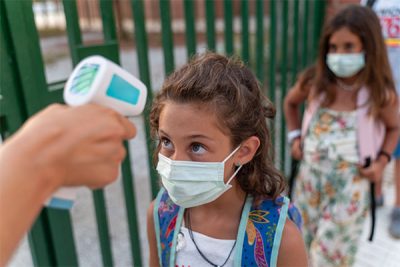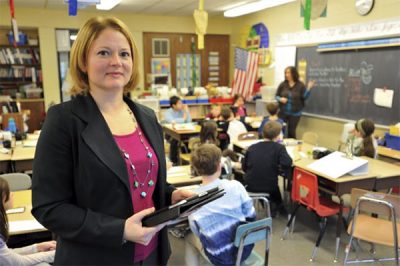WiSP Sports (Jennifer McGarry discusses career pathways in sports)
‘An Unusual Situation’: Here’s How Students Teachers are Working During a Pandemic
CT Post (Violet Jiménez Sims is quoted on Neag School’s student teaching program during the pandemic)
Current Faculty Openings at the Neag School of Education
Education Professor David K. Cohen Died Last Month. His Work Changed Me – And Our Field
Chalk Beat (Suzanne Wilson pens article about renowed educator)
UConn LENDs a Hand to Those With Disabilities
UConn Today (Mary Beth Bruder is quoted about her work with UConn’s Center of Excellence in Developmental Disabilities Education, Research and Service)
Director of NCRGE Shares Research Findings on Underrepresentation in Gifted Education
Duke TIP (Del Siegle’s presentation at Duke University on the underrepresentation of gifted education is featured)
Gifted Programs Worsen Inequity. Here’s What Happens When Schools Try to Get Rid of Them.
NBC News (The Schoolwide Enrichment Model, developed by Joseph Renzulli and Sally Reis, is featured)
Q&A: Schooling, Caregiving, and Emotional Support During COVID

Editor’s Note: The following piece was originally published in UConn Today.
In-person, hybrid, remote, and/or home-school – the options for K-12 schooling during the pandemic are complicated, each with their own pros and cons. UConn Today asked psychologist Sandra Chafouleas, Board of Trustees Distinguished Professor and Neag Endowed Professor in the Department of Educational Psychology, and co-director of the UConn Collaboratory on School and Child Health, about the importance of social and emotional health for children and their caregivers, particularly this year.
What are you hearing about how the return to school is going thus far?
Here in the Northeast, we have only been at this for a relatively short time. So, just like any regular school year when you’re starting out, there are things that don’t go as planned and adjustments that need to be made. It’s an even bigger challenge this year, even with all of the advance planning that has occurred.
As we continue to work out those kinks, we should take a deep breath and try to add a little extra patience as everyone is grappling with what school means this year. I saw a post just the other day that was a list of 2020-21 school supplies. Instead of the typical list of notebooks and pencils, there were keywords such as humor, understanding, and flexibility – I think that just about sums up this year.
“This year is all about acknowledging that a decision you are making today is likely not final. Uncertainty is the hardest part about all of this, and so it is expected that we feel angst and struggle with positive coping.”
What advice do you have for parents and families who are struggling with what schooling option is best for their children at this time?
I wouldn’t say that anybody should give you “best” advice, because there are questions that families need to ask themselves to decide what’s best for their situation. I’ve read some really angry comments on social media pushing a singular perspective, and I think that’s just a bit nearsighted. I think, again, we all have to take a really deep breath and say, “OK, what are the options that we have in answering what is right for us today, and what do we anticipate will work for this month and this year?”
I guess the advice that I do have is to actively work on strengthening flexibility so it can be easier to handle re-evaluating options. This year is all about acknowledging that a decision you are making today is likely not final. Uncertainty is the hardest part about all of this, and so it is expected that we feel angst and struggle with positive coping. But if we acknowledge those feelings are likely to happen, it means we can work hard to increase our dose of prevention strategies. Prevention is about more purposefully putting in place strategies that help us regulate our thoughts, feelings, and behaviors.
A lot of your research focuses on the social and emotional health of school-age children – something school administrators recognize is important but have not always had the resources to address in school. Is this more of a focus now, and what can parents do to help support their child’s social and emotional health in this new learning situation?
We are just finishing a survey of Connecticut superintendents and school principals where we asked questions about priorities prior to COVID, how those priorities have shifted, and even what’s keeping them up at night now. Social and emotional wellness has by far outranked other concerns. It’s really been brought to the forefront of conversations, and I suppose the good part about that is that we’re also seeing organizations and agencies rise to the challenge in providing great resources for school and family caregivers.
Lots of evidence-informed strategies have been curated and made widely accessible that anyone can use in strengthening social and emotional health. Particularly right now, families are absolutely a critical foundation to connecting about social and emotional health. As one example of a prevention strategy, consider purposefully building time for morning check-in and evening checkout into the daily routine. Doing so provides space for kids to talk about what they are thinking and feeling, which happens by caregivers asking questions and being reaffirming and nonjudgmental. It also helps caregivers identify when additional supports might be needed, organizes talking points when connecting back to school about supports, and provides opportunity to reflect on how we as the adults are modeling thoughts, feelings, and behaviors for our kids.

We hear quite often that children miss their friends right now. How important are those peer supports, and what can we do to help school-age children who are missing those social opportunities?
Peer connection is critically important, particularly as children head into the middle school years and beyond. So it is particularly concerning to me when I think about those students who may be more vulnerable – those that maybe didn’t already have strong social networks or have transitioned to new schools. So this is a good example of how families and schools need to work together in ensuring there is a check-in space around social connections.
I’ve seen some schools do innovative things to make sure, first and foremost, that every student has a trusted adult connection. It can be more challenging in a virtual environment, but teachers have come up with creative ways to build connections that help monitor what’s going on. To build those peer connections, schools can make sure that every child is part of a smaller social network, such as getting engaged in at least one club or activity. Every child must be connected in some way that is meaningful to them.
You’ve written about another pandemic our children are grappling with: the pandemic of teen suicide. Why do you call teen suicide a pandemic, and what can we do to help solve it?
When you look at the numbers of children thinking about, attempting, or completing suicide in a year, it can seem abstract. So in that particular article, I tried to give meaning to those numbers – for example, if you picture a typical classroom of 25 high school students, consider that approximately five could be thinking about suicide.
And then when you look at trends in those data over the past decade, it gets even scarier, given movement upward across subpopulations of students. To me, that’s what defines a pandemic. We know what we need to do to solve the problem, but we haven’t fully risen to that challenge.
A lot of suicide prevention work focuses on teaching the general public why mental health is important, how to recognize symptoms, and how to access help. This is good stuff, but we also need collective efforts to prevent getting to the point where those suicidal thoughts occur. Prevention involves creating a physically and emotionally safe space to grow and thrive, building connections to others, and learning about emotions along with getting feedback and practice on regulating emotions.
“To build peer connections, schools can make sure that every child is part of a smaller social network, such as getting engaged in at least one club or activity. Every child must be connected in some way that is meaningful to them.”
It’s not just children who are struggling right now – it’s also their caregivers, and caregivers of students with disabilities are bearing an even greater burden. What have you found in your research involving caregivers during COVID?
A couple of years ago, I had started working on this line of research with postdoc (and former graduate student) Emily Iovino ’15 (ED), ’16 MA, ’20 Ph.D. We were interested in understanding the needs of family caregivers of children with developmental disabilities. These caregivers have additional expectations around supporting their children, and our concern was the gap in attention to supporting their personal well-being. In school, we have all of these services and programs that we expect families to continue delivering at home, but we haven’t really asked if they are able to do it. Looking at the literature in adult caregiving, we see clear challenges in self-care, isolation, and negative physical and emotional health outcomes. Emily and I have been exploring simple options to support caregivers of students with developmental disabilities in promoting their own self-care.
And then COVID hit. Knowing what we already knew about family caregivers, we thought it was important to understand what was happening as direct school supports were reduced. We did an initial survey in April along with interviews and, six months later, are completing a follow-up survey. As we had hypothesized, the greatest stress right now for everyone is around education.
It’s definitely the top thing that’s coming up in the minds of all caregivers. But caregivers of children with developmental disabilities have even more challenges now; the burden of providing education and all of those related services has really fallen squarely on them. The caregivers of children with developmental disabilities that we interviewed overwhelmingly told us they need direct help in providing services for their children, but they personally need respite. It’s not surprising that the gaps are widening even further with regard to their personal self-care.
I very much think about how we can best support family caregivers right now, and particularly caregivers of students with disabilities. Everybody is struggling in different ways. Although we can expect those struggles, and that there are good and bad moments, we need to be OK with asking for help. I hope each of us can find a space to help a caregiver in need, as that is how we will ultimately do our best in fostering physical and emotional safety for our kids.
Your Pandemic Hobby Might Be Doing More Good Than You Know
American Heart Association (James Kaufman is interviewed about the benefits of hobbies during the pandemic)
Soak in Empowerment Through a Colorful Conversation as ‘Women of Color Unite’
The Daily Campus (Neag School doctoral student Luz Burgos-Lopez is quoted as part of a UConn panel)
